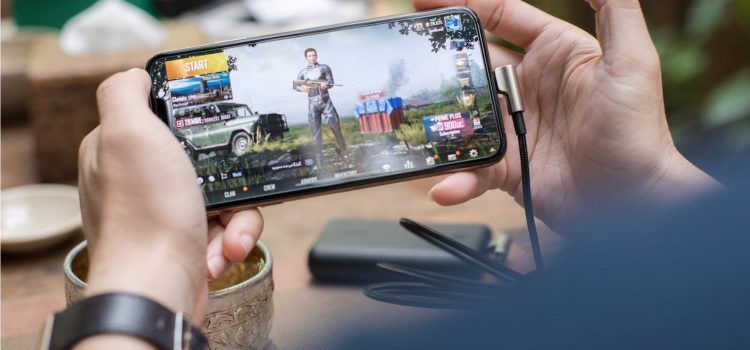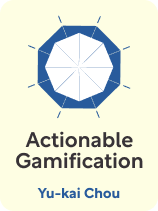

This article is an excerpt from the Shortform book guide to "Actionable Gamification" by Yu-kai Chou. Shortform has the world's best summaries and analyses of books you should be reading.
Like this article? Sign up for a free trial here.
What are gamification rewards? What are the different types? How can you use gamification in your business?
According to Yu-kai Chou, gamification rewards can make or break a game, and designing them effectively for your business can be a challenge. In his book Actionable Gamification, he explains that the key to motivating players with rewards is randomness and mystery.
Read on to learn how to design the most effective gamification rewards, according to Chou.
Planning Your Gamification Rewards
In Actionable Gamification, Yu-kai Chou explains how to design a gamification system for your business and recommends considering what players get if they “win.” These gamification rewards may be symbolic prizes such as trophies, ribbons, or badges. They could also be monetary rewards or real-world prizes such as lottery jackpots or bonus incentives.
Chou explains that the three areas where you can use gamification are management, marketing, and product design.
- In management, these gamification rewards could be bonuses employees unlock by hitting certain targets.
- In marketing, this could take the form of random prizes under the bottle cap of a soft drink.
- In product design, these could take the form of virtual points or rewards users gain from an app.
| How to Design Effective Gamification Rewards In planning your gamification reward system, you’ll start by determining whether to offer virtual rewards (like points and badges) or tangible rewards (like money and prizes). Virtual rewards are going to be much cheaper to offer, but they will only be useful if your player already has a reason to invest themselves in the gamification system—people are unlikely to get into a game purely for the sake of obtaining rewards that don’t have any meaning outside of the gamespace. In this commentary, we’ll examine some important considerations for creating reward systems for both virtual and material rewards. If you’re going to offer virtual rewards, you can create a richer and more complex player experience by understanding the different types of virtual rewards. Using multiple types of virtual rewards can add variety to your player’s experience while engaging different types of players. Game designers have identified five types of virtual rewards. 1. Rewards of entry unlock new content for players to experience. 2. Rewards of effectiveness increase a player’s abilities within the gamespace. 3. Rewards of pride symbolically represent player achievements. 4. Rewards of validation give the player praise and recognition. 5. Rewards of sensation offer satisfying aesthetic experiences. If you’re going to offer material prizes, experts recommend three important considerations for creating a successful campaign. First, consider your budget. Once you know how much you can invest in prizes, you’ll have a clearer picture of which kinds of prizes work. Secondly, think about your demographic. Pick prizes that are aligned with the interests and desires of your players. Also, try to pick prizes that your demographic will find unique and memorable. Lastly, plan for different tiers of prizes. Players will be more motivated if there are a mix of big and small prizes. The bigger prizes will keep people motivated and excited, while the smaller prizes will spread around the excitement of winning. |
Entice With Randomness and Mystery
Chou asserts that players are also motivated by curiosity, unpredictability, and mystery. This is because people are naturally excited and stimulated when they encounter new experiences. By adding randomness and unknown outcomes to your gamification system, you can tap into the powerful drive of curiosity to keep your players engaged. Chou recommends two strategies: offer unpredictable rewards and unpredictable outcomes.
Offer Unpredictable Rewards
In gamification, unpredictable rewards are ones where a player doesn’t know what they’re going to get. Chou explains that people are excited by the possibility, novelty, and anticipation of an unpredictable reward. If a player doesn’t know what they’re getting, then it feels like opening a present. This is why many game shows offer contestants the ability to trade their prizes for a mystery prize. This is also why trading cards are often sold in packs with random cards inside. The mystery makes it exciting for customers to open up the pack and see what’s inside. If your gamification system includes rewards, consider offering a box whose contents are unknown to the player, or try letting players spin a prize wheel of potential awards.
| Why Are Unpredictable Rewards So Compelling? In Hooked, Nir Eyal and Ryan Hoover theorize as to why unpredictable rewards are so much more compelling than predictable ones. They argue that many of the most important rewards in human evolution were unpredictable from moment to moment. For example, hunting and gathering would yield very different results from day to day, so people may have developed a strong motivation to stay persistent in pursuing unpredictable rewards. Also, social rewards like validation and acceptance are out of people’s control and therefore unpredictable. But these rewards are still very important to people’s well-being and therefore highly sought after. Eyal and Hoover argue that these evolutionary pressures encouraged humans to pursue unpredictable rewards. |
Incorporate Unpredictable Outcomes
As well as randomizing gamification rewards, Chou explains that a lot of games incorporate unpredictable outcomes into the gameplay. For example, just think of how many games involve rolling dice or drawing cards. Adding unpredictability to game outcomes and mechanics can add excitement and freshness each time people play. This is because with unpredictable outcomes, there’s always a chance of winning and being surprised. For example, if your company is designing an app to drive engagement with your brand, consider adding randomness by giving players a chance to use random number generators or prize wheels as part of their app experience.
(Shortform note: Studies have found that a sense of suspense and unpredictability play a bigger role in a player’s enjoyment than winning. Researchers have found that people are more likely to want to play a competitive game again if the outcome was close than if they won by a large margin. Once people can predict the outcome of a game, it becomes boring, even if the player gets the outcome they wanted.)

———End of Preview———
Like what you just read? Read the rest of the world's best book summary and analysis of Yu-kai Chou's "Actionable Gamification" at Shortform.
Here's what you'll find in our full Actionable Gamification summary:
- How to use gamification to grow your business
- Why some gamification systems are addictive and others fail
- How to keep players engaged and motivated






